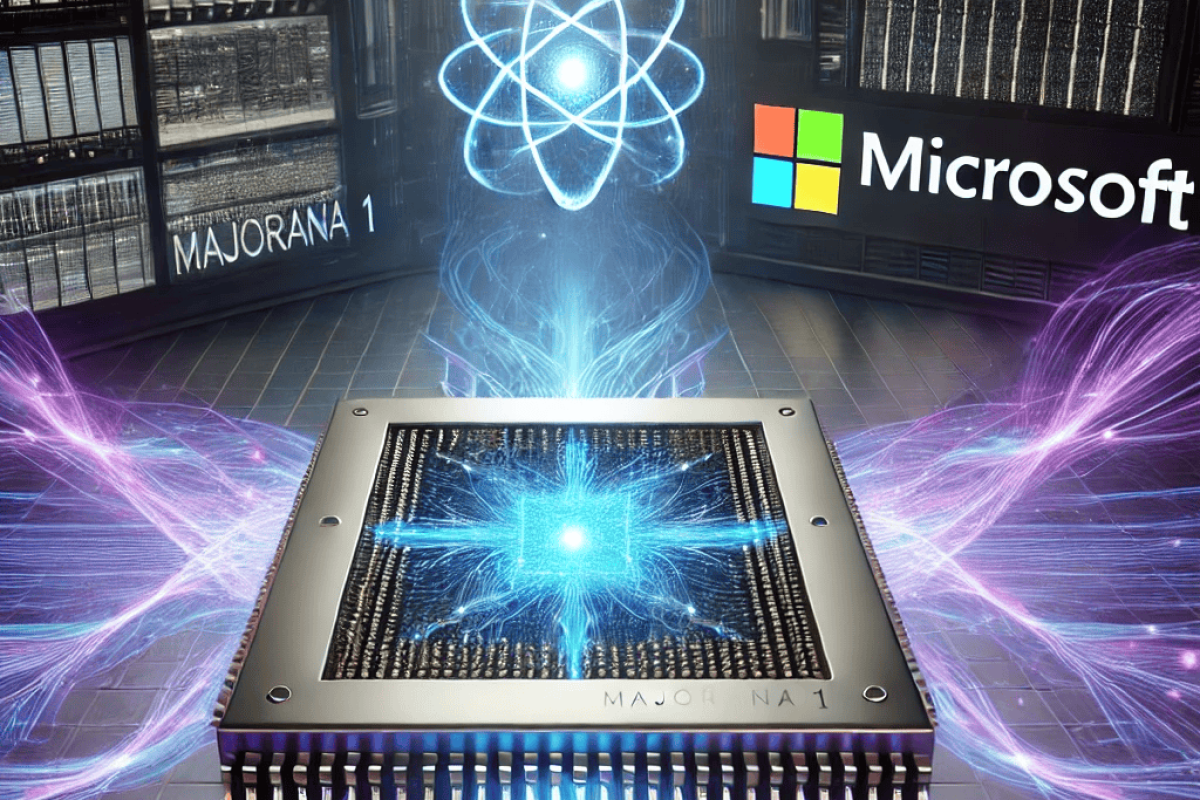Microsoft’s Quantum Leap: The Majorana 1 Chip and the Future of Computing
For decades, quantum computing has existed as a tantalizing possibility, promising to revolutionize industries from medicine to materials science. But the journey from theoretical promise to real-world application has been fraught with challenges—chief among them, creating qubits that are stable, scalable, and practical for everyday use. Now, Microsoft is claiming a breakthrough that could mark a turning point in this long-anticipated revolution.
Enter the Majorana 1 chip, an innovation built on a novel approach to quantum architecture that could redefine how quantum computers are constructed. Unlike previous attempts that relied on fragile, error-prone qubits, Majorana 1 leverages an entirely new kind of material called topoconductors—substances designed to stabilize quantum states in ways that were once purely theoretical. If Microsoft’s claims hold up, this could be the breakthrough that propels quantum computing from the laboratory into the real world.
A New Kind of Qubit
At the heart of Majorana 1 lies one of the strangest phenomena in modern physics: Majorana zero modes. These exotic quantum states, predicted nearly a century ago by the Italian physicist Ettore Majorana, behave in a way that makes them uniquely suited for quantum computing. By harnessing these quasi-particles, Microsoft has devised a new type of qubit—one that, in theory, is far more resilient to the errors that have long plagued quantum computers.
This is no small feat. Traditional qubits, which are typically built using superconducting circuits or trapped ions, are incredibly sensitive to their environment. Even the slightest disturbance—heat, electromagnetic interference, or even cosmic rays—can cause them to lose their quantum state, a phenomenon known as decoherence. This fragility has been one of the major bottlenecks in scaling quantum computers beyond a few dozen qubits.
Microsoft’s topological qubits, enabled by Majorana zero modes, offer a different approach. Instead of storing quantum information in a single location, they spread it out across multiple areas within the material itself. This makes them inherently more stable, reducing error rates and allowing quantum processors to scale more effectively. In essence, Microsoft believes it has created a quantum transistor—the equivalent of the revolutionary silicon transistors that made modern computing possible.
The Engineering Feat Behind Majorana 1
Building the Majorana 1 chip was no small engineering challenge. The chip’s architecture is a testament to Microsoft’s nearly two-decade investment in quantum research. The key innovation? A meticulously designed aluminum nanowire structure arranged in an ‘H’ pattern. Each ‘H’ contains four controllable Majorana particles, collectively forming a single qubit.
This modular design is what allows for unprecedented scalability. As Krysta Svore, a Microsoft technical fellow, explained, once the Majorana qubits are established, they can be tiled together in a straightforward way—paving the way for a million-qubit system within a single, compact chip. “It’s complex in that we had to show a new state of matter to get there,” she said. “But after that, it’s fairly simple.”
That simplicity could be transformative. Traditional quantum computers require room-sized dilution refrigerators and painstaking calibration to maintain stability. The compact Majorana 1 chip, in contrast, fits in the palm of a hand, integrating qubits and control electronics into a single device. This smaller form factor could allow quantum computers to be deployed in existing data centers, including Microsoft’s own Azure cloud infrastructure.
From Theory to Real-World Impact
If Microsoft’s vision comes to fruition, quantum computing could soon tackle problems that have remained unsolvable for classical computers. The applications are wide-ranging:
- Environmental Science: Quantum simulations could lead to the discovery of catalysts that break down microplastics, addressing one of the world’s most persistent pollution problems.
- Agriculture: More precise quantum models could help scientists engineer new compounds to improve soil fertility and crop yields.
- Materials Science: Quantum algorithms could unlock new materials with unprecedented properties, including self-healing infrastructure that reduces maintenance costs for roads and bridges.
- Pharmaceuticals: Quantum simulations could accelerate drug discovery by modeling molecular interactions at a level of precision unattainable with today’s supercomputers.
Each of these breakthroughs hinges on the ability to scale quantum systems beyond today’s experimental models. Microsoft believes its approach, which circumvents the limitations of traditional qubits, is the most promising path to achieving this goal.
The Competitive Race for Quantum Dominance
Microsoft is far from the only player in the quantum computing race. IBM, Google, Intel, and a host of startups are also pursuing quantum supremacy, each with its own approach. IBM and Google, for example, have invested heavily in superconducting qubits, while others are exploring trapped ions, photonic qubits, and even room-temperature quantum systems.
What sets Microsoft apart is its commitment to topological quantum computing, a field it has championed since the early 2000s. While competitors have focused on refining existing qubit architectures, Microsoft has bet on an entirely new paradigm—one that required proving the existence of Majorana zero modes in a laboratory setting before it could even begin engineering a chip around them.
This long-term gamble may now be paying off. Unlike traditional superconducting qubits, which require constant error correction and complex control systems, Majorana-based qubits are expected to have built-in fault tolerance, reducing the need for excessive error-correcting overhead. If this advantage proves true at scale, Microsoft could leap ahead of competitors in building practical, large-scale quantum systems.
The Road Ahead
Of course, significant challenges remain. While Microsoft has demonstrated that Majorana 1 works in controlled settings, scaling it to a fully functional quantum computer will require extensive testing and refinement. Quantum computing as a whole still faces fundamental hurdles, from improving coherence times to refining error correction algorithms.
Still, the introduction of Majorana 1 signals a major shift. After years of speculation about when quantum computing will become practical, Microsoft’s breakthrough suggests that moment could be closer than we think.
The impact of quantum computing, much like that of classical computing before it, will not be immediate. The first transistors did not instantly create the personal computer revolution. But they laid the groundwork for it. If Majorana 1 is the transistor equivalent for quantum computing, we may be standing at the precipice of a new technological era—one where the most complex problems of science, medicine, and industry are tackled not by brute-force classical computation, but by the elegant, otherworldly mechanics of quantum physics.
The quantum race is heating up, and Microsoft has just made its boldest move yet. The next few years will determine whether Majorana 1 truly represents the dawn of practical quantum computing—or just another chapter in its long and winding journey.




